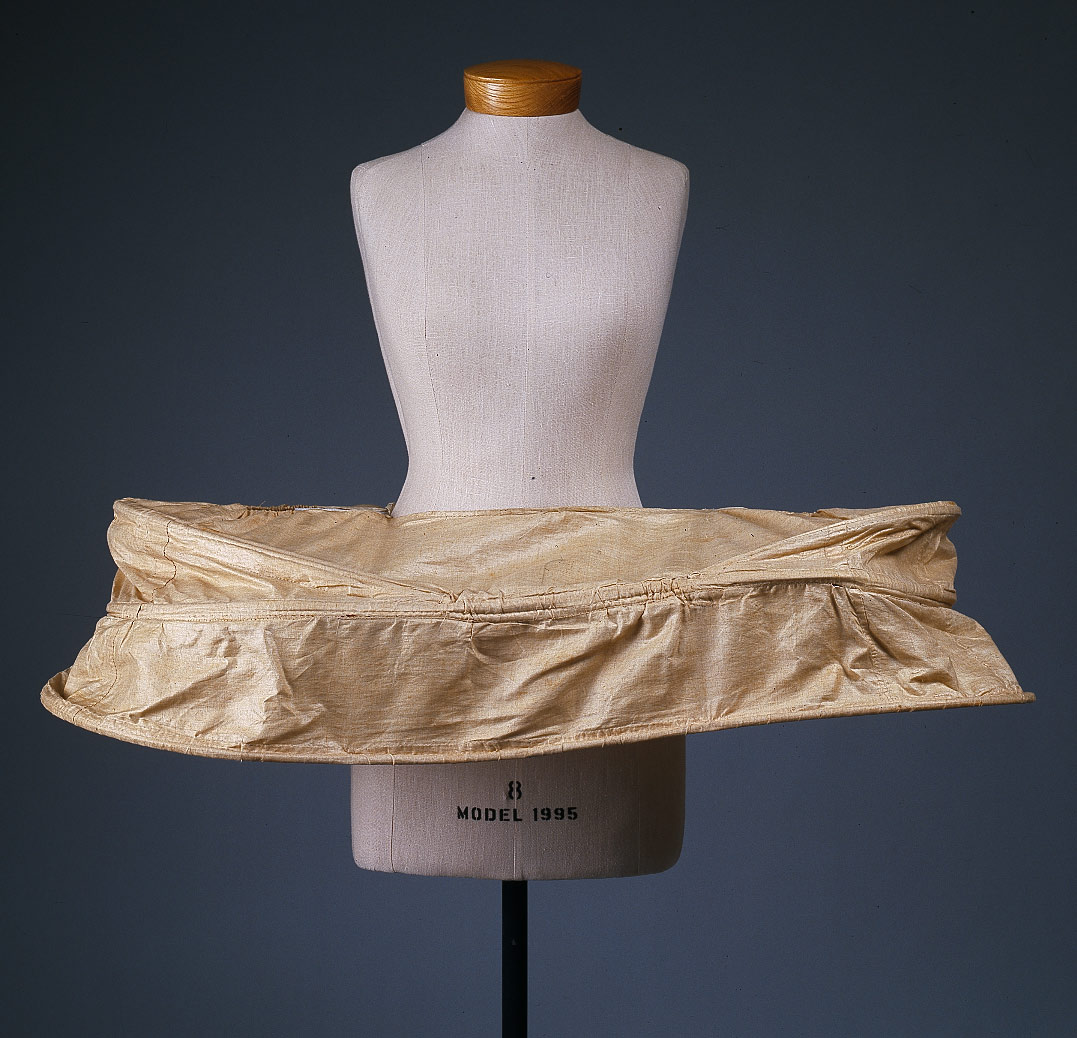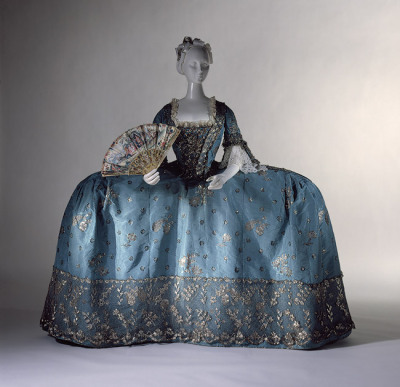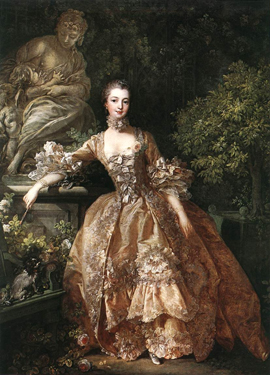
I write books set in the Regency era, but my real love is the mid Georgian era, the 1750’s in particular. And of course one of the big differences is dress. I can’t possibly cover all the differences in one blog post, but one of the most—prominent—differences was the panier. Or paniers, strictly.
The shape of the skirt changed drastically throughout the century. At the beginning, the bottom was padded to give an elegant shape to the folds flowing over the back. Then the skirts got fuller and fuller, until the sheer bulk of petticoats must have been too much, and the hooped petticoat was worn. Those of us who have been bridesmaids and forced into a meringue dress knows what that’s like. quite handy, because you can wear big pockets under it. it must have signalled freedom to the hampering, tangling, hot skirts.
 In the 1740’s, the hoops became enormous. Women had to go through doorways sideways, and coming towards you they looked like ships in full sail, or walking sofas. As fashion developed the mantua went out of fashion, replaced by the sacque, the robe anglaise, and the robe a la francaise, but the mantua continued to be worn at court. and the huge size of the hoops continued, too, right through until the 1820’s.
In the 1740’s, the hoops became enormous. Women had to go through doorways sideways, and coming towards you they looked like ships in full sail, or walking sofas. As fashion developed the mantua went out of fashion, replaced by the sacque, the robe anglaise, and the robe a la francaise, but the mantua continued to be worn at court. and the huge size of the hoops continued, too, right through until the 1820’s.But the hooped petticoat is cumbersome. Getting in and out of coaches, walking in high winds and just getting through doors can be a hazard. So eventually some bright spark developed the panier. It was a cage, usually made of cane or whalebone, that rested on the hips. It gave the necessary padding for passion, but were much more practical. They were collapsible, that is, they worked a bit like an umbrella and could be lifted to temporarily collapse them for doors and coaches.
 By the 1750’s, everyday hoops and panniers were much smaller. Sometimes, especially on informal occasions, the lady might replace the panier with a quilted petticoat for some light padding. There was a brief fashion in the mid 1750’s among the younger set for leaving off the paniers in public. With gowns designed to be worn with paniers underneath, it made the
By the 1750’s, everyday hoops and panniers were much smaller. Sometimes, especially on informal occasions, the lady might replace the panier with a quilted petticoat for some light padding. There was a brief fashion in the mid 1750’s among the younger set for leaving off the paniers in public. With gowns designed to be worn with paniers underneath, it made the  wearer look a bit—deflated. But the panier continued to decline in size, until they disappeared altogether in the 1780’s and the bum roll made a reappearance. I love the look. Before the hair became stupidbig in the fashion of the 1770’s, the line was elegant and beautiful, as seen in the gorgeous portraits by Gainsborough and Reynolds.
wearer look a bit—deflated. But the panier continued to decline in size, until they disappeared altogether in the 1780’s and the bum roll made a reappearance. I love the look. Before the hair became stupidbig in the fashion of the 1770’s, the line was elegant and beautiful, as seen in the gorgeous portraits by Gainsborough and Reynolds.It’s always the case that the younger generation despises the clothes that its parents wore, although that has sped up in recent times. The heavy brocades and sumptuous silks of the high Georgian era gave way to the impractical pale and thin muslins of the early nineteenth century, and they themselves gradually grew fuller until, inevitably, the hoop made a return. Only this time it was called the crinoline.
Lynne Connolly
http://lynneconnolly.com

No comments:
Post a Comment